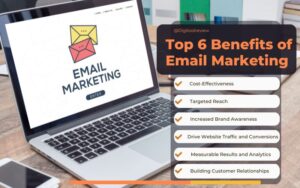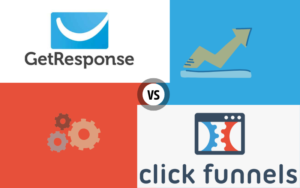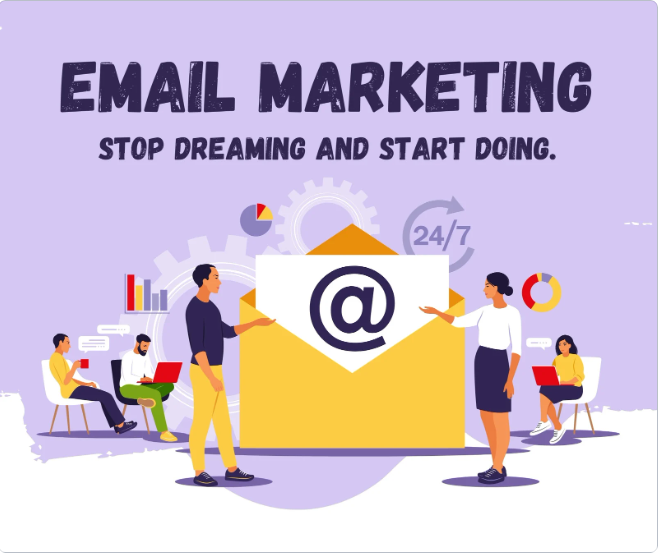
Introduction to B2B Email Marketing
B2B email marketing stands at the forefront of strategic communication in the business-to-business landscape, offering a direct line to engage, inform, and convert potential business clients. This vital tool combines the efficiency of digital communication with the personal touch needed to foster meaningful business relationships. In this content, we delve into the nuances of B2B email marketing, exploring its significance, best practices, and the critical role of visuals in enhancing message delivery and reader engagement.
Deliverability Rates
In the realm of B2B email marketing, the concept of email deliverability rates stands as a crucial metric, determining the success of your marketing efforts. Simply put, deliverability rate refers to the percentage of your emails that successfully reach the inbox of your recipients, bypassing filters that relegate messages to the spam folder or block them entirely. Understanding and optimizing your deliverability rates is essential for ensuring that your carefully crafted messages reach their intended audience, thus maximizing the potential for engagement and conversion.
Why Deliverability Rates Matter in B2B Email Marketing
For businesses operating in the B2B sector, where communication often plays a pivotal role in nurturing leads and maintaining client relationships, the significance of email deliverability cannot be overstated. A high deliverability rate implies that your messages are being seen by your audience, which is the first step towards generating interest, building relationships, and driving sales. Conversely, poor deliverability can not only waste resources but also tarnish your reputation by marking your domain as untrustworthy.
Key Factors Influencing Deliverability Rates
Several factors can impact your email deliverability rates, including sender reputation, email content, and recipient engagement. Sender reputation is influenced by your domain’s history and the behavior of your email recipients (such as the frequency of marking your emails as spam). The content of your emails, including the use of keywords often associated with spam, can also affect deliverability. Additionally, engagement metrics like open rates and click-through rates play a role; lower engagement can signal to email service providers that recipients are not interested in your emails, potentially affecting future deliverability.
Improving Your B2B Email Deliverability
To enhance your B2B email marketing deliverability rates, consider the following practices:
- Clean Your Email Lists Regularly: Remove inactive or unengaged subscribers to improve your engagement metrics.
- Authenticate Your Emails: Utilize protocols like SPF, DKIM, and DMARC to verify your emails’ legitimacy.
- Optimize Email Content: Avoid spam-triggering keywords and ensure your emails provide value to your audience.
- Monitor Your Sender Reputation: Use tools provided by email service providers to keep track of your domain’s health.
Email Automation Capabilities in B2B Email Marketing
Email automation represents a powerful tool in the arsenal of B2B email marketing, enabling businesses to send timely, relevant, and personalized messages to their audience with minimal manual intervention. By leveraging automation capabilities, companies can nurture leads, enhance customer engagement, and drive conversions more efficiently. Understanding and implementing these capabilities can significantly impact your marketing strategy’s effectiveness and efficiency.
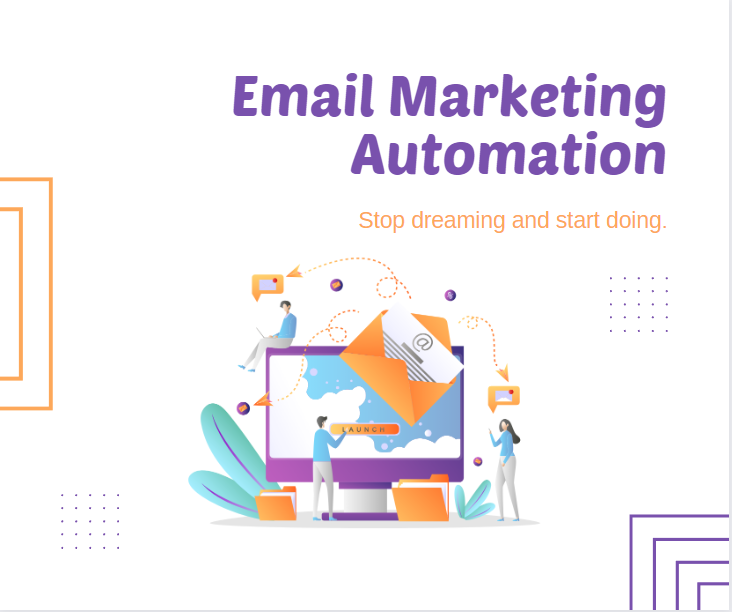
Key Benefits of Email Automation
- Time Savings: Automate routine communications and focus on strategy and content creation.
- Increased Relevance: Send targeted messages based on user behavior and preferences.
- Scalability: Easily manage large volumes of email without compromising on personalization.
- Consistency: Maintain regular contact with your audience, ensuring your brand stays top of mind.
Essential Email Automation Features
- Trigger-based Emails: Automatically send emails based on specific actions taken by your contacts, such as signing up for a newsletter or abandoning a shopping cart.
- Segmentation: Divide your email list into smaller, more targeted groups based on criteria like demographics, engagement level, or purchase history to send more relevant content.
- Personalization: Use information you have about your contacts to tailor emails, addressing them by name, referencing past interactions, or suggesting products based on their purchase history.
- Scheduled Campaigns: Plan and execute email campaigns to be sent out at the most opportune times, ensuring maximum impact.
- Performance Tracking: Utilize built-in analytics to track the success of your email campaigns, allowing for ongoing optimization.
Improving Engagement Through Email Automation
Implementing email automation in your B2B email marketing strategy can lead to more meaningful interactions with your audience. By automating the delivery of relevant, personalized content at the right time, you’re more likely to engage your recipients, encouraging them to take the desired action. Whether it’s nurturing leads down the sales funnel or keeping existing customers informed, email automation ensures your message is always timely and relevant.
Integration with Other Tools in B2B Email Marketing
In the landscape of B2B email marketing, the capacity for seamless integration with a variety of other business tools can markedly amplify the effectiveness and efficiency of your marketing campaigns. Integration refers to the ability of different software platforms to communicate and work together, sharing data and functionalities to streamline workflows and enhance insights. For businesses looking to drive growth through email marketing, the integration capabilities of their chosen platform are not just a convenience but a necessity.
Why Integration Matters
Integration with CRM systems, analytics tools, social media platforms, and other marketing software enables a unified approach to customer data and campaign management. This holistic view allows for more targeted, personalized marketing efforts, better tracking of customer interactions across multiple touchpoints, and more informed decision-making based on comprehensive data analysis. More
Key Advantages of Tool Integration in Email Marketing
- Enhanced Personalization: By integrating with CRM and other data sources, you can utilize detailed customer information to tailor your email campaigns, increasing relevance and engagement.
- Efficient Workflow: Automation tools that integrate with your email platform can trigger actions in other systems, reducing manual tasks and saving time.
- Consistent Branding: Integration with design and content management tools ensures your emails always match your brand’s look and feel.
- Data-Driven Decisions: Combining insights from your email campaigns with data from other platforms provides a more complete picture of your marketing performance, guiding more effective strategies.
Implementing Integration
Achieving effective integration typically involves selecting email marketing software that offers native integrations with the other tools your business uses. Many platforms also offer APIs (Application Programming Interfaces) that allow for custom integrations, providing flexibility to tailor the software ecosystem to your specific needs.
Customization and Personalization Features in B2B Email Marketing
In the realm of B2B email marketing, the power of customization and personalization cannot be overstated. These features allow businesses to tailor their messaging and content to meet the specific needs and interests of their audience, leading to higher engagement rates, improved customer relationships, and ultimately, increased sales. Customization refers to the ability to alter the design and layout of your emails, while personalization involves using subscriber data to make the content more relevant to each recipient.
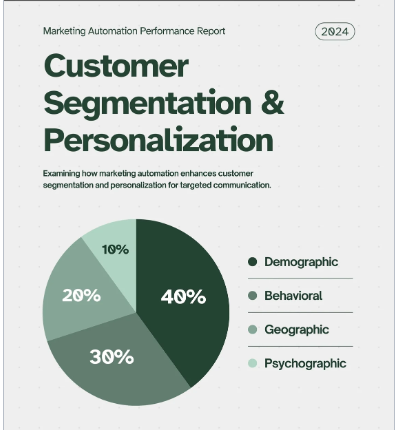
Why Customization and Personalization Matter
Customization and personalization are critical because they help your emails stand out in a crowded inbox. They make your recipients feel valued and understood, increasing the likelihood that they will engage with your content and take the desired action. Moreover, in a B2B context, where decisions are often made after careful consideration and involve multiple stakeholders, these tailored communications can significantly impact the buyer’s journey.
Key Features for Effective Customization and Personalization
- Dynamic Content: Incorporate content that changes based on the recipient’s behavior, preferences, or demographic information, ensuring each email feels bespoke.
- Segmentation Tools: Utilize tools that segment your email list based on various criteria, allowing for targeted messaging that resonates with different audience segments.
- User Behavior Tracking: Track how recipients interact with your emails and website, using this data to personalize future communications.
- Template Customization: Use customizable templates that allow you to modify layouts, colors, and fonts to align with your brand identity and appeal to your target audience.
- Personalized Email Triggers: Set up automated emails triggered by specific actions, such as downloading a white paper or visiting a particular webpage, to provide timely and relevant content.
Improving Engagement Through Personalization
By leveraging customization and personalization features, B2B marketers can create more meaningful and engaging email experiences. Personalized emails that address the recipient’s specific needs and interests are more likely to capture attention, foster a sense of connection, and drive action.
Analytics and Reporting in B2B Email Marketing
Analytics and reporting tools are indispensable in B2B email marketing, providing insights that guide strategic decisions and optimize campaign performance. These tools collect data on how recipients interact with your emails, offering a detailed view of what works and what doesn’t. This feedback loop is crucial for refining your approach, ensuring your messages resonate with your audience, and ultimately, driving better business outcomes.
Understanding Analytics and Reporting
At the heart of analytics and reporting is data – from open rates and click-through rates to more advanced metrics like conversion rates and email forwarding rates. This information helps marketers understand recipient behavior, identify trends, and measure the effectiveness of their email campaigns against set goals.

Key Metrics to Monitor
- Open Rate: The percentage of recipients who opened your email, indicating the effectiveness of your subject line.
- Click-Through Rate (CTR): The percentage of recipients who clicked on one or more links within the email, showing how engaging your content is.
- Conversion Rate: The percentage of recipients who completed a desired action, such as filling out a form or making a purchase, pointing to the overall success of the email.
- Bounce Rate: The percentage of emails that could not be delivered, which can highlight issues with your email list quality.
- Unsubscribe Rate: The rate at which people are opting out of your email list, signaling content relevance or frequency issues.
Enhancing Strategy with Insights
The power of analytics lies in its ability to inform strategy. By understanding which subject lines lead to higher open rates or which content drives engagement, marketers can tailor their future emails for maximum impact. Additionally, segmentation can be refined based on recipient behavior, ensuring that your messages are highly relevant and targeted.
Compliance and Security in B2B Email Marketing
In B2B email marketing, compliance, and security are not just best practices—they are mandatory aspects that safeguard the integrity of marketing operations and protect the privacy of recipients. Adhering to legal standards and securing data against unauthorized access is crucial for maintaining trust and credibility with your audience. Let’s delve into why compliance and security matter and how images can enhance content on this topic.
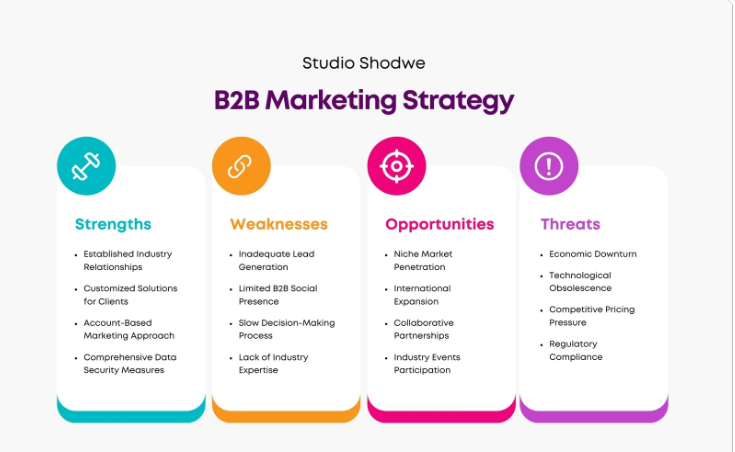
Understanding Compliance and Security
Compliance involves adhering to laws and regulations governing email marketing, such as the General Data Protection Regulation (GDPR) in Europe, the CAN-SPAM Act in the United States, and other global data protection laws. These regulations dictate how businesses should handle personal data, obtain consent, and respect recipients’ rights to privacy and consent.
Security, on the other hand, refers to the measures and protocols put in place to protect email marketing systems and subscriber data from cybersecurity threats, including data breaches, phishing attacks, and malware.
Key Aspects of Compliance and Security
- Data Protection and Privacy: Ensuring that personal data is collected, stored, and used securely and lawfully.
- Consent and Opt-in/Opt-out Mechanisms: Implementing clear consent mechanisms for subscribers and making it easy for them to opt out of communications.
- Regular Audits and Updates: Conduct regular security audits and updates to protect against new vulnerabilities and ensure compliance with evolving regulations.
- Employee Training and Awareness: Educating staff about best practices in data protection and threat recognition to prevent accidental breaches or non-compliance.
User Experience and Ease of Use in B2B Email Marketing Platforms
In B2B email marketing, the user experience (UX) and ease of use of the email marketing platform play pivotal roles in determining the efficiency and effectiveness of a marketer’s efforts. A platform that is intuitive and straightforward to navigate not only streamlines the creation and management of campaigns but also ensures that marketing teams can focus on strategy and creativity rather than wrestling with complex software. This section explores the importance of UX and ease of use in email marketing platforms and why visuals are integral to discussing this topic.

Understanding User Experience and Ease of Use
User Experience encompasses all aspects of the end-user’s interaction with the company, its services, and its products. In the context of email marketing platforms, this means how easily marketers can design emails, segment lists, analyze reports, and manage campaigns.
Ease of Use refers to the simplicity with which a new user can perform tasks without extensive training. A platform that scores high on ease of use will have a gentle learning curve and allow users to quickly become proficient in its features.
Key Components of a Great UX in Email Marketing Platforms
- Intuitive Navigation: The platform should have a clear, logical layout that makes it easy to find features and execute tasks.
- Template Customization: Access to customizable templates that cater to various content types and campaigns.
- Comprehensive Analytics Dashboard: A user-friendly dashboard that presents key metrics in an accessible manner, enabling marketers to make informed decisions.
- Automation Features: Easily configurable automation workflows that save time and enhance campaign effectiveness.
- Responsive Support: Accessible and helpful customer support for troubleshooting and guidance.
Template Design and Responsiveness in B2B Email Marketing
Template design and responsiveness are crucial elements in B2B email marketing that directly impact engagement, readability, and ultimately, the success of your campaigns. A well-designed template ensures that your message is conveyed clearly and attractively across all devices, while responsiveness ensures that your emails look great and function perfectly regardless of whether they’re viewed on a desktop, tablet, or smartphone. This section will delve into the importance of these aspects and explain why visuals are key to discussing them.
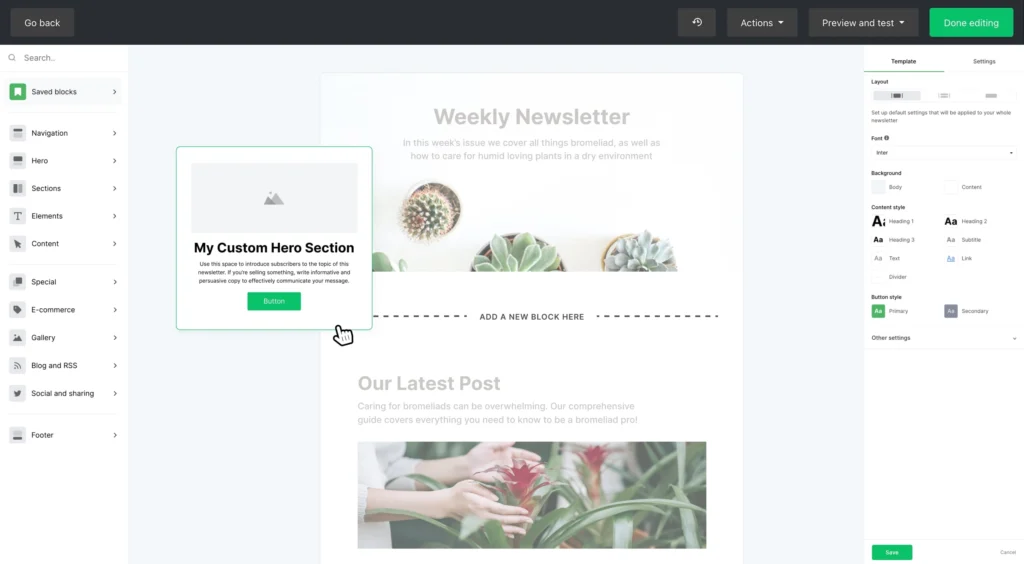
The Importance of Template Design
The design of your email templates plays a significant role in capturing the attention of your recipients and encouraging them to engage with your content. Good template design adheres to your brand’s visual identity, uses space efficiently, and prioritizes the most important information to make a lasting impression.
Key Elements of Effective Template Design:
- Consistency with Branding: Incorporating your brand’s colors, fonts, and logos to strengthen brand recognition.
- Clear Hierarchy: Structuring content to guide readers through the email in a logical order.
- Visual Appeal: Using images, headers, and bullet points to break up text and add visual interest.
Understanding Responsiveness in Email Templates
Responsiveness in email design refers to the ability of email templates to automatically adjust their layout and content to fit the screen size and resolution of the device on which they are viewed. This ensures that your emails are accessible and easy to read on any device, enhancing the user experience and increasing the likelihood of engagement.
A/B Testing and Optimization Tools in B2B Email Marketing
A/B testing, also known as split testing, is a crucial methodology in B2B email marketing that allows marketers to compare two versions of an email to see which one performs better on a given conversion goal. This process, supported by optimization tools, is essential for making data-driven decisions that enhance the effectiveness of email campaigns. Here’s why A/B testing is indispensable for optimization and how images can significantly contribute to explaining this concept.

The Essentials of A/B Testing
At its core, A/B testing involves sending out two variants of an email to a small percentage of your total recipient list. Each variant is identical except for one difference which might influence the recipient’s behavior. This difference could be anything from the email subject line, content, call to action (CTA), or even the design of the email itself. The performance of each variant is measured and analyzed to determine which version is more effective in achieving the desired outcome.
Why A/B Testing and Optimization Tools Are Key:
- Enhance Email Engagement: By testing different elements, you can discover what resonates best with your audience, leading to higher open rates, click-through rates, and conversions.
- Reduce Guesswork: Make informed decisions based on data rather than intuition, increasing the efficiency of your email marketing efforts.
- Continuous Improvement: A/B testing is not a one-time task but a continuous process of refinement, allowing for ongoing optimization of email campaigns.
Importance of A/B Testing and Optimization Tools
A/B testing and optimization tools are software solutions that automate the process of creating and conducting tests, collecting data, and analyzing results. These tools can significantly simplify the testing process, making it more accessible and less time-consuming for marketers to optimize their campaigns.
Customer Support and Community in B2B Email Marketing
In the competitive sphere of B2B email marketing, having robust customer support and an active community can significantly differentiate a service or platform. These elements are crucial not just for resolving technical issues but also for fostering a sense of belonging among users, encouraging knowledge sharing, and facilitating network building. This discussion will delve into the importance of customer support and community in B2B email marketing and how images can enhance the content.

The Importance of Customer Support
Customer support in B2B email marketing serves as the frontline assistance for businesses encountering challenges or questions about their email marketing efforts. Quality support can include a range of services, from troubleshooting technical issues to providing strategic advice on campaign optimization.
Key Aspects of Effective Customer Support:
- Accessibility: Support should be easily reachable through multiple channels like email, phone, live chat, or social media.
- Responsiveness: Quick response times can significantly improve user satisfaction and trust in the platform.
- Expertise: Support staff should have deep knowledge of the platform and email marketing best practices to provide valuable insights.
The Role of Community in B2B Email Marketing
An active community around a B2B email marketing platform or service can be an invaluable resource. Communities can take various forms, including online forums, social media groups, or user conferences. They provide a platform for users to share experiences, ask questions, offer advice, and exchange ideas, fostering a collaborative learning environment.
Pricing and Value for Money in B2B Email Marketing
In B2B email marketing, understanding the balance between pricing and value for money is critical for businesses aiming to maximize their marketing budgets while achieving significant returns on investment (ROI). This segment explores how companies can evaluate email marketing solutions based on their pricing structures and the value they offer, ensuring that the chosen platform aligns with their marketing objectives and budget constraints. Furthermore, we’ll discuss why images are an essential component in illustrating these concepts.
Evaluating Pricing Structures
B2B email marketing platforms typically offer a range of pricing structures designed to accommodate businesses of various sizes and needs. These can include:
- Pay-as-you-go: Ideal for businesses with fluctuating email volume.
- Monthly subscriptions: Suitable for companies with regular email marketing activities.
- Annual contracts: Best for organizations committed to long-term email marketing strategies, often offering cost savings compared to monthly plans.
Assessing Value for Money
Value for money goes beyond the price tag. It encompasses the features, support, and performance a platform offers relative to its cost. Key factors to consider include:
- Features and Capabilities: Does the platform provide the tools you need, such as automation, segmentation, and analytics?
- Ease of Use: Can your team efficiently use the platform without extensive training?
- Scalability: Will the platform grow with your business without exponential cost increases?
- Customer Support: Is expert advice readily available to help you optimize your campaigns?
- Security and Compliance: Does the platform ensure your email marketing practices comply with relevant regulations?
Case Studies and Success Stories in B2B Email Marketing
Case studies and success stories are powerful tools in B2B email marketing, serving as tangible proof of the effectiveness and potential impact of email marketing strategies. They not only highlight the successes of businesses similar to those of the reader but also provide insights into practical strategies and tactics that can be replicated or adapted. This section will delve into the importance of featuring case studies and success stories in B2B email marketing and the role images play in enhancing their impact.
Why Case Studies and Success Stories Matter
- Build Credibility: Sharing real-world examples of success instills confidence in your email marketing solutions or strategies.
- Illustrate Impact: Detailed accounts of how companies achieved their marketing goals can demonstrate the tangible impact of effective email marketing.
- Provide Inspiration: Success stories can inspire businesses to adopt new strategies or tools they hadn’t considered before.
- Offer Practical Insights: Case studies often include specific tactics, challenges overcome, and lessons learned, providing valuable takeaways for readers.
Key Elements of Effective Case Studies and Success Stories
- Background Information: Briefly introduce the business and the challenges it faced.
- Solution Implemented: Describe the email marketing strategies or solutions used to address the challenges.
- Results Achieved: Quantify the outcomes in terms of key metrics like engagement rates, lead generation, or ROI.
- Testimonials: Include direct quotes from stakeholders to add authenticity.
- Key Takeaways: Summarize the lessons learned and how they can be applied by others.
In conclusion, B2B email marketing emerges as a cornerstone of effective digital strategy, enabling businesses to connect with their audience on a personal and professional level. Through targeted messaging, personalization, and the strategic use of visuals, companies can significantly enhance their engagement, build lasting relationships, and drive meaningful business outcomes. By embracing best practices in email design, content, and analytics, marketers can unlock the full potential of B2B email marketing, turning every email sent into an opportunity to grow and strengthen their business in the competitive digital marketplace.



